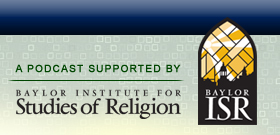

|
James Felak on Vatican Council II  Date: December 31st, 2012
 In October of 1962, several thousand cardinals, bishops and other dignitaries met at the Vatican to initiate what would become a three year “meeting of minds” that became known as The Second Vatican Council (a.k.a., Vatican Council II or Vatican II). To celebrate the 50th anniversary of the beginning of this momentous gathering, we invite back our favorite historian of modern Catholicism, James Felak, professor of history at the University of Washington. James guides us through a brief history of Christian/Catholic councils dating back to the First Council of Nicaea. All told, there have been 21 general (major) councils. We talk about their general purpose and also note how there was a roughly 300 year gap in major councils before Vatican Council I was called 1868. We review what happened at The First Vatican Council as a way of setting the table for the second one, which was to follow a century later. Prof. Felak lays out the historical context of the mid-19th century that helped to motivate Vatican I, as well as the main issues that were debated and decided at that council, including papal infallibility and the role and autonomy of the bishops. Interestingly, the specific role of the bishops and collegiality was never fully resolved, something that had an impact on Vatican II. We then catapult ourselves into the 20th century to discuss the motivations behind the convening of VCII. James points out, contrary to some popular opinion, that the Catholic Church was not in crisis during the mid-1990s and “crisis” was not a motivating factor behind this council. Although VCII is most associated with John XXIII, James notes that Pope Pius XII was making plans for a general council to reaffirm what was decided at Vatican I. With Pius’s death, though, things change and Prof. Felak nicely summarizes the differences between these two popes and how this shapes what would become VCII. He notes that some of the changes that would occur within the liturgy began with Pius XII, contrary to his image as being more conservative pontiff. Likewise, John XXIII was not as theologically liberal as many people now assume; he just liked to hug people in public, which seems somewhat liberal. Interestingly, we learn that John XXIII was considered to be a “caretaker” pontiff, something that is not uncommon within Catholic history; given John XXIII’s age it was assumed that he would maintain the status of the Church while considerations would be given to who the next pope would be. But lo and behold, John XXIII, who was not likely in on Pius XII’s plans, suprisingly calls a council in 1959. This propels Tony into a little bit of mathematical calculation, noting that there is a 3 1/2 year gap between when Vacican II is announced and when it actually convenes. This generates a discussion about the logistics for such a large event. James fills us in on how decisions were made about who to invite, how much of the council would be open to the general public (via modern media) and other faiths, and who will be setting the intellectual underpinnings of the meeting itself. We even discuss the critical issue of how to house all these people, including members of the media and observers from other faiths who were invited as a means of opening a dialogue about ecumenism. After soliciting opinions about what should be discussed, we discover that the agenda starts to spiral in all different directions, which gives rise to the council’s three-year duration. We start that discussion by noting what was not talked about at the conclave, including birth control, clerical celibacy, and the role of the Curia. James then goes into the wide range of issues that were addressed and brings up the various important documents such as Dignitatis Humanae, Gaudium et Spes and Lumen Gentium. We also chat about the politicking that went on behind the scenes, how media leaks influenced the conference, and what role the US government might have tried to play during the proceedings. In the last 20 minutes of the interview, James discusses the impact that Vatican II has had on the Catholic Church since the 1960s and emphasizes the “spirit of Vatican II” and the tension of getting back to basics (ressourcement) and growing organically with a changing world (aggiornamento). Tony shares his experiences with the folk Mass that he remembers from his childhood. James then disavows some of his misplaced notions about how John Paul II has tried to reverse the reforms of Vatican II; just as John XXIII was not as liberal as popular media portrays him, neither was John Paul II the conservative that he is often made out to be. We finish with Prof. Felak’s thoughts about where the Catholic Church is heading over the next several years. Recorded: December 18, 2012. RELATED LINKS Prof. James Felak’s biography at the University of Washington. After Hitler, Before Stalin: Catholics, Communists, and Democrats in Slovakia, 1945-1948, by James Felak. RELATED PODCASTS James Felak on Pope John Paul II and Communism. James Felak on Pope Pius XII, The Wartime Pontiff. Lan Chu on Catholicism in Vietnam.
One Response to “James Felak on Vatican Council II”Leave a Reply |
 Search The Podcast
To search the podcast, type a term and click the Search button.
  Browse Podcast Categories
Select a category below to browse the podcast:
   |















[…] James Felak on Vatican Council II. […]